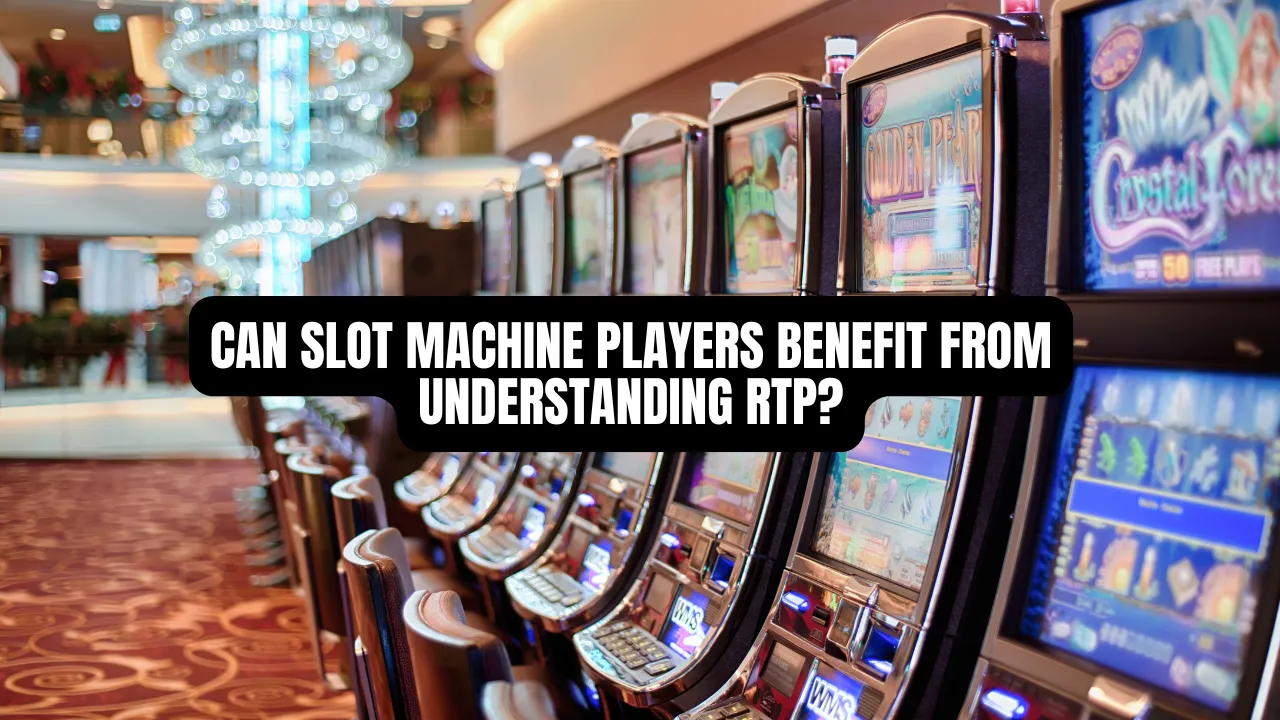When most people sit down at a slot machine, their main focus is on the excitement of spinning reels, colorful graphics, and the potential for a big win. Yet behind every slot game lies a critical number that can shape your long-term experience: RTP, or Return to Player. This percentage, usually hidden in the game’s information section, isn’t just casino jargon. It’s a mathematical insight into how much of your money a slot is programmed to pay back over time.
For casual players, RTP might sound too technical to bother with. But from my own research and years of observing how both online and land-based casinos operate, I’ve come to realize that understanding RTP is one of the smartest ways to approach slots. It won’t guarantee a win, but it does give players an edge in making informed choices.
What Exactly Does RTP Mean?
RTP stands for “Return to Player” and is expressed as a percentage. In simple terms, it’s the theoretical amount a slot game will return to players over a very long period. For example, a slot with an RTP of 96% is designed to pay back £96 for every £100 wagered, though in reality, individual sessions can swing wildly above or below that figure.
This number doesn’t mean you’ll get 96 pounds back every time you spend 100. It reflects outcomes over thousands or even millions of spins. Casinos use RTP to set the balance between offering entertainment and ensuring profitability. By knowing this percentage, players can better decide which games are worth their time.
Interestingly, many online platforms — including non uk casinos that accept uk players — highlight RTP figures more transparently than traditional land-based casinos. This accessibility makes it easier for players to choose slots with higher returns and avoid those with notably lower payouts.
Why RTP Matters for Slot Players
RTP provides a benchmark that helps players manage expectations. Too often, newcomers believe that every spin has the same chance of delivering big wins regardless of the game they choose. While it’s true that slots are based on random number generators (RNGs), the RTP percentage significantly shapes how often, and how much, the game tends to pay back.
For example, a game with an RTP of 88% might seem just as entertaining as one with 97%, but the long-term difference in payouts is substantial. Over time, that 9% gap translates into more money staying with the casino instead of coming back to players. Choosing higher RTP games doesn’t change the randomness of outcomes, but it does tilt the odds slightly more in your favor.
From a personal perspective, I’ve noticed how seasoned players often gravitate toward games with transparent RTP data. They know that while luck dominates in the short run, the math always asserts itself in the long run.
How Variance and RTP Work Together
While RTP tells you about long-term returns, it doesn’t paint the whole picture. Variance (sometimes called volatility) is another factor that players should consider. A high-variance slot tends to pay out less often, but when it does, the rewards are bigger. A low-variance slot pays smaller amounts more frequently.
Combining RTP and variance gives a clearer sense of a game’s character. A high-RTP, low-variance slot might be perfect for players who enjoy steady, smaller wins and longer play sessions. On the other hand, thrill-seekers may prefer high-variance games despite their unpredictable swings, especially if paired with a decent RTP.
Understanding both concepts helps players match their gaming style and budget to the right slot machines. It’s like knowing whether you’re better off with a steady marathon pace or an all-out sprint in your gambling sessions.
Online Transparency Versus Land-Based Mystery
One major advantage of playing online is transparency. Digital casinos often list RTP percentages in the game’s information tab, and some even publish average payout data across all their slot offerings. Land-based casinos, by contrast, are less forthcoming. Slot machines in brick-and-mortar venues rarely display RTP, and the actual percentages can vary widely depending on the jurisdiction and casino policies.
This transparency has given online players more control over their gaming choices. By selecting higher RTP slots, they can enjoy a slightly better long-term edge. It also helps build trust in online platforms, since players feel they’re making informed decisions rather than playing blind.
Can RTP Knowledge Change Player Behavior?
The real question is whether knowing RTP actually changes how people play. From what I’ve seen, it absolutely does — but mostly for players who take their gambling seriously. Recreational players may not care about the math and just want to enjoy the experience. Serious or regular players, however, often use RTP as a filter when deciding where to spend their money.
It’s similar to shopping with price tags in mind. You might buy the occasional luxury item for the experience, but for everyday spending, most of us prefer value for money. Likewise, slot players who understand RTP tend to gravitate toward games that give them better odds in the long run, even if their short-term results still depend on chance.
Responsible Gambling and RTP Awareness
Another overlooked benefit of RTP knowledge is its role in promoting responsible gambling. Players who understand that every slot has a built-in house edge are less likely to chase losses or assume they can “beat the system.” They recognize that wins and losses are part of the design and not a reflection of their skill or luck alone.
Some casinos have even integrated responsible gaming tools that display RTP data alongside spending reminders, session timers, and self-exclusion options. These features help players keep gambling within healthy limits while staying informed about the mathematical framework behind each game.
The Future of RTP in Gaming
As the gambling industry evolves, RTP is likely to become an even more prominent feature of player education. Regulators in some regions already require casinos to disclose this data openly, and online platforms are leading the way in normalizing transparency.
Future innovations may involve real-time RTP tracking, where players can see live payout performance rather than relying only on theoretical values. This would make slot gaming even more transparent and possibly more appealing to informed audiences.
For now, RTP remains a crucial piece of information that savvy slot machine players should not ignore. Whether playing online or in a physical casino, understanding RTP is the closest thing to having a roadmap in a game that otherwise relies on randomness.
Conclusion
While RTP won’t guarantee wins or eliminate the unpredictability of slots, it provides valuable context that every player can benefit from. By understanding the return-to-player percentage, gamblers can make smarter choices, align their expectations with reality, and enjoy a more sustainable gaming experience.
In the end, slots will always be a blend of entertainment and chance. But armed with knowledge of RTP, players can tilt the odds ever so slightly in their favor — and that knowledge is worth more than any spin.




